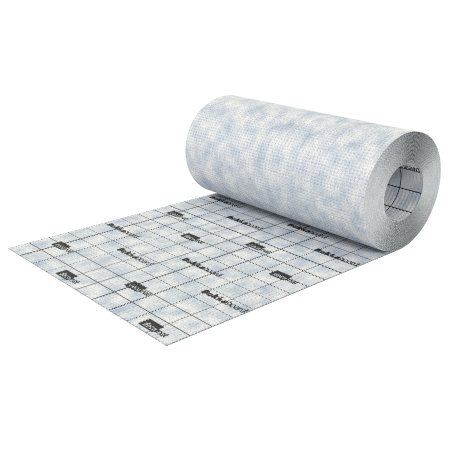
Uncoupling membranes. often referred to as movement mattings, are designed to overcome a variety of potential tiling problems, which naturally makes them a very popular choice with professional tilers. These useful membranes will uncouple the layer of tiles from the substrate below, which reduces any potential stresses, whilst assisting with waterproofing, heat exchange and evaporation.
How to overcome common tiling problems with uncoupling membranes
1) Water sensitive tiling substrates
Many substrates struggle when they get wet, especially plaster based and wooden substrates. Gradually, the water will cause the surface below the tiles to lose strength and any wood will begin to expand, warp and rot. This increases the stress between the substrate and the tiles, which eventually leads to delamination and cracks.
2) Expansion or shrinkage of the tiling substrate
Newly laid concrete and screed contains water which will naturally evaporate, leading to loss in volume and shrinkage of the substrate. It is also important to remember that all substrates will naturally expand or shrink with any changes in temperature and humidity, and every form of movement will create stress between the tiles and the substrate below as they are not moving in tandem.
3) Problematic substrates
There are substrates which can be particularly problematic, such as asphalt which contains oils or metal surfaces which are very smooth. The smoothness and lack of abrasive texture makes it difficult for tiles to adhere and maintain a reliable substrate.
How to install uncoupling membranes
1) Prepare the tiling substrate
Firstly, you will need to ensure the substrate is completely level and where possible sanded to create a rough surface. Then, vacuum and clean the substrate to ensure it is free of any dirt, dust or grease. The uncoupling membrane can then be rolled out across the substrate and cut to size, whilst leaving the required perimeter gaps for expansion.
2) Install the membrane
Once the membrane has been cut to the required size, a flexible tile adhesive should be combed onto the substrate with a notched trowel. The membrane can then be pressed into the prepared substrate with a rubber float. The flat edge of a trowel can then be used to smooth out any air pockets.
All adjoining membranes should be carefully butted together, without overlapping separate pieces of matting. In addition, wherever there is a change in substrate, a movement joint or an expansion joint, the matting should be separated and any excess adhesive removed from between the joints.
3) Waterproofing
If the uncoupling membrane is to be used as part of a waterproofing later, all joints will need to be sealed with a waterproofing membrane such as the AquaTank Neo-Flex Membrane. A thin layer of the membrane should be applied to overlap all joints by at least 50mm, with the same method used for all perimeter joints. However, you will need to take care not to fill any movement or expansion joints.
4) Laying tiles
A thin layer of adhesive can then be spread directly on the membrane, and the tiles can be laid straightaway.
Types of uncoupling membranes
There are many different types of uncoupling membranes available which are each designed to provide specific features for different tiling circumstances. Here at Quantum, we stock a variety of movement and waterproof matting solutions, which include:
- • Dukkaboard Isomat Movement Matting
• Durabase CI++ Matting
• Dukkaboard Deco Matting
• Dukkaboard Decoshield Drain Manchets
• Dukkaboard Decoshield Matting
• Dukkaboard Iso Shield Movement Matting
• Dukkaboard Soundproofing Acoustic-SR
The benefits of uncoupling membranes
1) Suitable for use in bathrooms, wet rooms and kitchens.
2) Will assist with waterproofing, heat transfer with underfloor heating and evaporation.
3) Minimises tension stress between the substrate and the tiled surface.
4) Safe installation on challenging substrates.
5) Tiling can begin immediately after membrane is laid.
6) Lightweight, easy to cut and install.
7) Can be used with most tile types, including porcelain, ceramic, mosaic and natural stone.
8) Compact and easy to store and transport.
If you would like to find your nearest stockist of our membranes and matting solutions, or to stock any of our products, please contact our team today.

